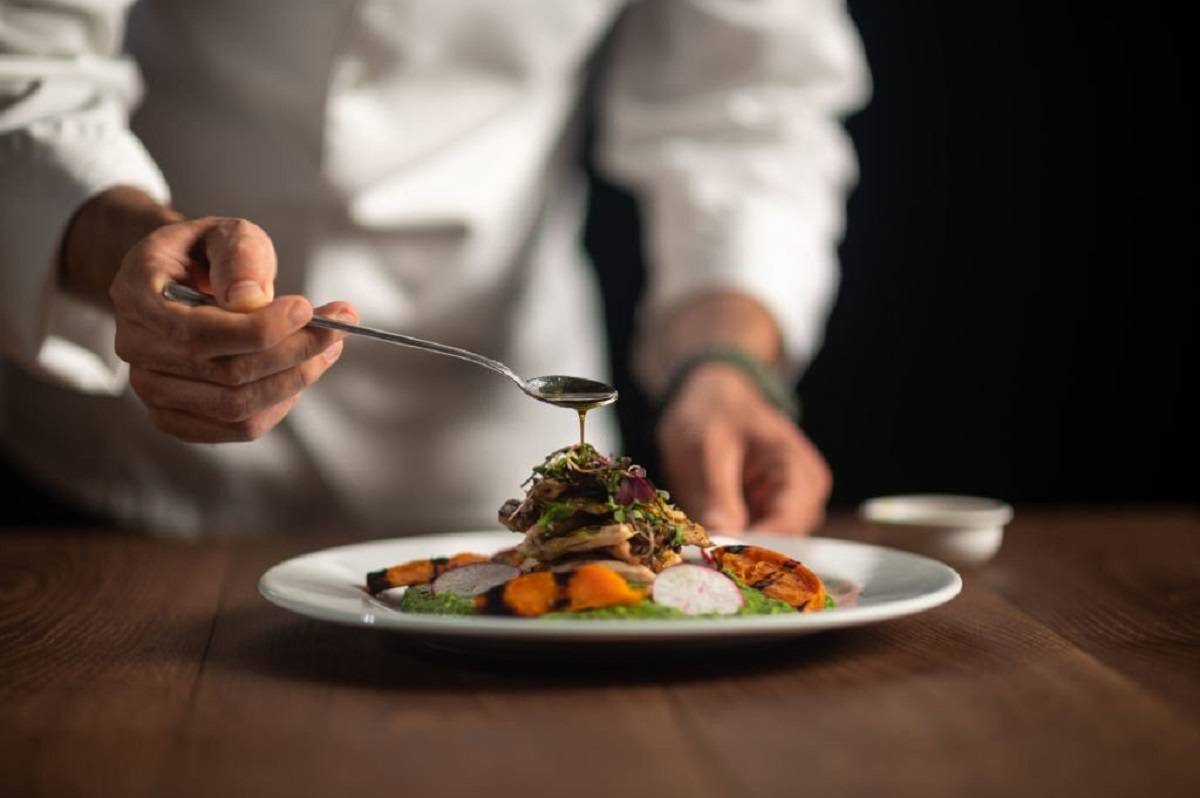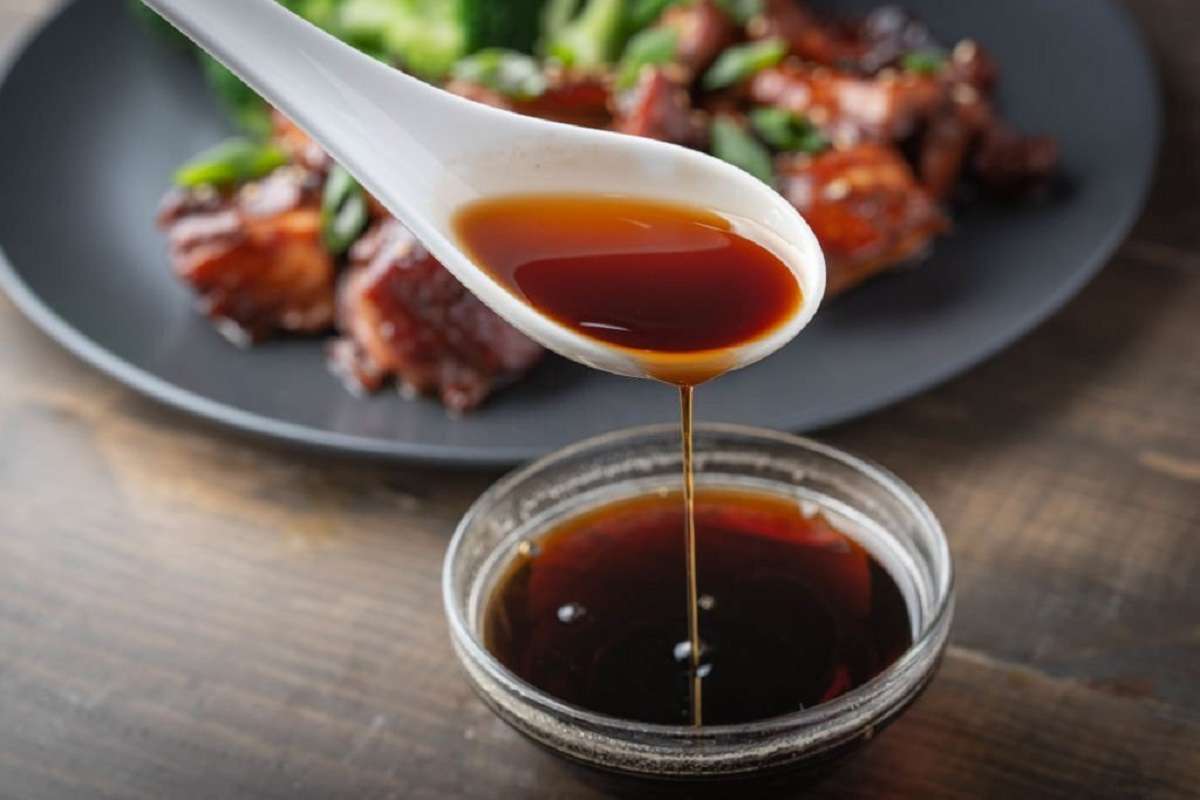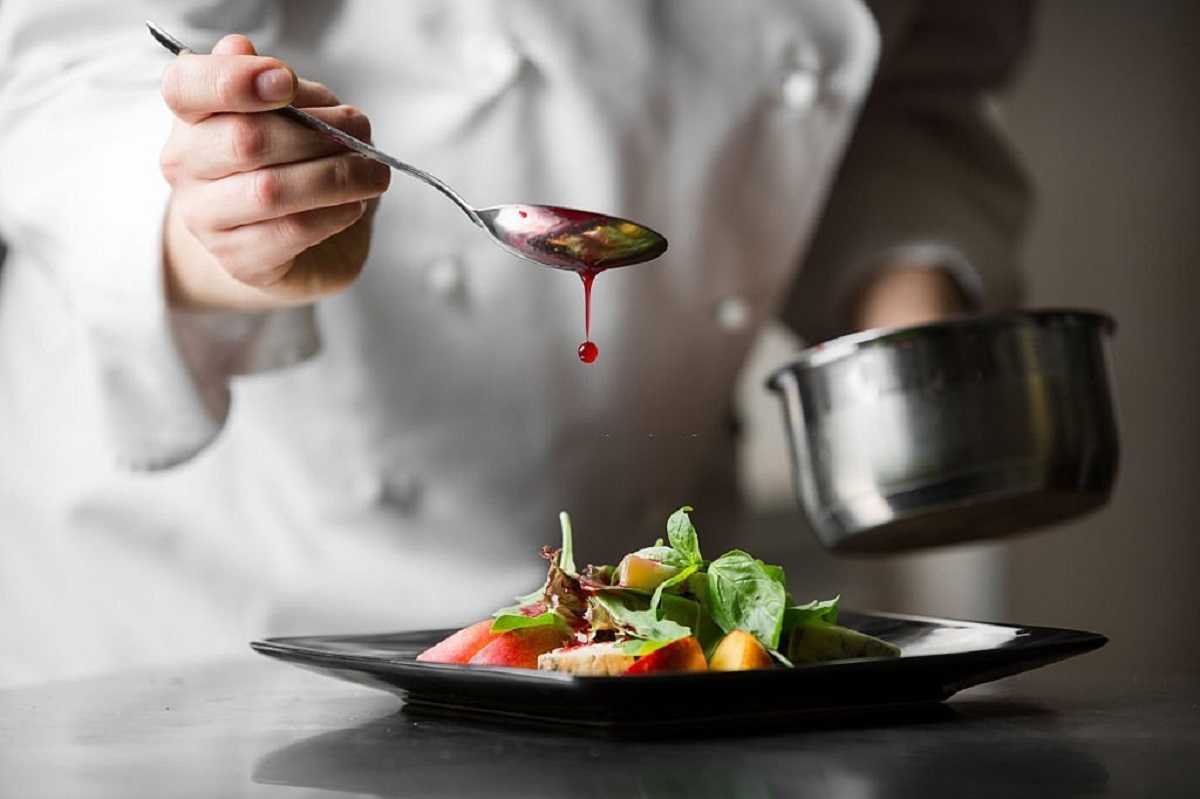Discover the enchanting allure of Cantonese sauce, a culinary masterpiece celebrated in Cantonese cuisine. This exquisite sauce, boasting a luscious reddish-brown hue, entices the palate with its delightful blend of sweetness and tanginess. At its core, the flavors of salt, garlic, and a refreshing hint of citrus harmonize to create a symphony of taste.
In the realm of Chinese gastronomy, Cantonese sauce reigns supreme as a cornerstone. Its incredible versatility makes it an indispensable companion to an array of delectable dishes, ranging from sizzling stir-fries and tantalizing noodles to delectable dumplings.
While the fundamental elements of Cantonese sauce encompass soy sauce, sugar, rice vinegar, and cornstarch, the realm of possibilities knows no bounds. With each chef adding their unique touch, the culinary landscape expands to embrace diverse ingredients such as ginger’s warmth, the piquancy of garlic, the allure of chili peppers, or the aromatic essence of sesame oil.
The artistry behind creating Cantonese sauce begins by combining the ingredients in a saucepan, coaxed to a gentle boil. As the alchemy unfolds, the sauce gracefully simmers until its texture reaches a delightful viscosity, thanks to the skillful interplay of cornstarch.

Table of contents
Origins and History
Cantonese sauce, with its delightful sweet and tangy taste, has a long and fascinating history. Believed to originate from China’s Guangdong province, it has stood as a classic foundation in Chinese cooking for centuries.
The earliest recorded mention of this sauce can be traced back to the 14th-century cookbook Yinshi Zhengyin. Its recipe closely resembles the Cantonese sauce we enjoy today, comprising soy sauce, sugar, rice vinegar, and cornstarch.
During the Qing dynasty (1644-1912), Cantonese cuisine gained popularity and spread throughout China, carrying its beloved sauce to various regions. Eventually, in the 19th century, Cantonese sauce traveled beyond borders, finding its way to the United States, captivating the hearts of Chinese immigrants and quickly becoming a sensation.
Over time, the sauce’s core ingredients have remained consistent, but creative cooks have explored diverse variations by adding ginger, garlic, chili peppers, or sesame oil. This versatility enables Cantonese sauce to harmoniously infuse flavor into countless dishes worldwide.
From vibrant stir-fries to comforting noodles, delectable dumplings, and even spring rolls, it effortlessly elevates the taste of a broad spectrum of cuisines. Not just limited to its place of origin, this sauce has become an adored culinary gem celebrated across the globe.

Cantonese Sauce
Equipment
- 1 Saucepan
- 1 Cups
- 1 Whisk
- 1 Knife
- 1 Serving Bowl
Ingredients
- 1 tbsp soy sauce
- 1 tbsp rice vinegar
- 1 tbsp sugar
- 1/4 tbsp ground ginger
- 1/8 tbsp ground garlic
Instructions
- In a small saucepan, combine the soy sauce, rice vinegar, sugar, cornstarch, ginger, and garlic.
- Bring the sauce to a boil over medium heat, stirring constantly.
- Reduce the heat to low and simmer for 2 minutes, or until the sauce has thickened.
Video
Notes
5 Mouthwatering Cantonese Sauce Recipes You Need to Try
1. Classic Hoisin Sauce
A classic Cantonese condiment, hoisin sauce is a delicious mash-up of sweet, salty, and acidic tastes. This sauce, which is made from soybeans, garlic, vinegar, and a hint of chile, is excellent for glazes, dipping, and stir-fries. Hoisin sauce is a top contender for any Cantonese cuisine because of its rich flavor and silky texture.2
2. Flavorful Char Siu Sauce
The char siu sauce is responsible for the mouthwatering flavor of char siu, the well-known Cantonese grilled pork. This delicious sauce is a concoction of honey, hoisin, soy, Chinese five-spice powder, and other ingredients. The outcome is deliciously caramelized, soft meat that is ideal for sandwiches, rice bowls, and noodles.
3. Delectable Oyster Sauce
Oyster sauce is a common ingredient in Cantonese cooking. It is a glossy, black sauce with a distinctive umami flavor. This sauce, despite its name, does not taste like oysters; instead, it is produced by boiling oyster extracts with soy sauce, sugar, and spices. Its adaptability enables it to improve the flavor of meats, fish, and vegetables alike.
4. Savory Black Bean Sauce
Cantonese foods benefit from the robust and savory addition of black bean sauce. This sauce, which is made from fermented black beans, garlic, and other seasonings, goes perfectly with seafood and tofu dishes. Its powerful flavor profile is evidence of the hearty and rich flavor of Cantonese food.
5. Zesty Garlic Chili Sauce
Garlic chili sauce is the solution for individuals who enjoy a little heat. This sauce gives dumplings, Noodle Bowl, and rice dishes a thrilling new depth by fusing the pungent fresh garlic with the heat of red chilies. Infusing your food with a blast of bright flavors just requires a small amount.

Exploring the Flavors of Cantonese Cuisine The Ultimate Cantonese Sauce Guide
1. Hoisin Sauce: The Sweet and Savory Delight
Hoisin sauce is a staple in Cantonese cuisine, beloved for its harmonious blend of sweetness and umami. Made from soybeans, garlic, chili, and various spices, this versatile sauce complements a wide range of dishes, from Peking duck to stir-fried noodles.
2. Oyster Sauce: Umami-Rich Perfection
Oyster sauce, crafted from oyster extracts, adds a burst of umami flavor to Cantonese delicacies. Its rich and savory taste makes it an ideal accompaniment for seafood, vegetables, and even meat dishes like beef stir-fry.
3. Char Siu Sauce: The Glazed Goodness
Char Siu sauce, a delectable blend of hoisin sauce, honey, soy sauce, and Chinese five-spice powder, is the key to crafting the mouthwatering Cantonese barbecue pork (Char Siu). Its sweet and sticky glaze is simply irresistible.
4. Black Bean Sauce: Earthy and Aromatic
Made from fermented black soybeans, garlic, and other spices, black bean sauce adds an earthy and savory dimension to Cantonese stir-fries and seafood dishes. Its robust flavor profile makes it a favorite among many Cantonese chefs.

Traditional Cantonese Dishes Made with the Sauce
It finds its way into numerous traditional dishes, making them truly exceptional. Here are some iconic Cantonese delicacies that owe their distinctiveness to this marvelous sauce.
Cantonese Roast Duck
Juicy and succulent Cantonese roast duck owes its irresistibility to the exquisite marinade that imparts a beautiful glaze and flavor to the duck’s skin.
Char Siu (Barbecue Pork)
Char Siu, or Cantonese barbecue pork, showcases the perfect marriage of tender meat and a glossy, caramelized coating achieved through a delightful glaze.



















